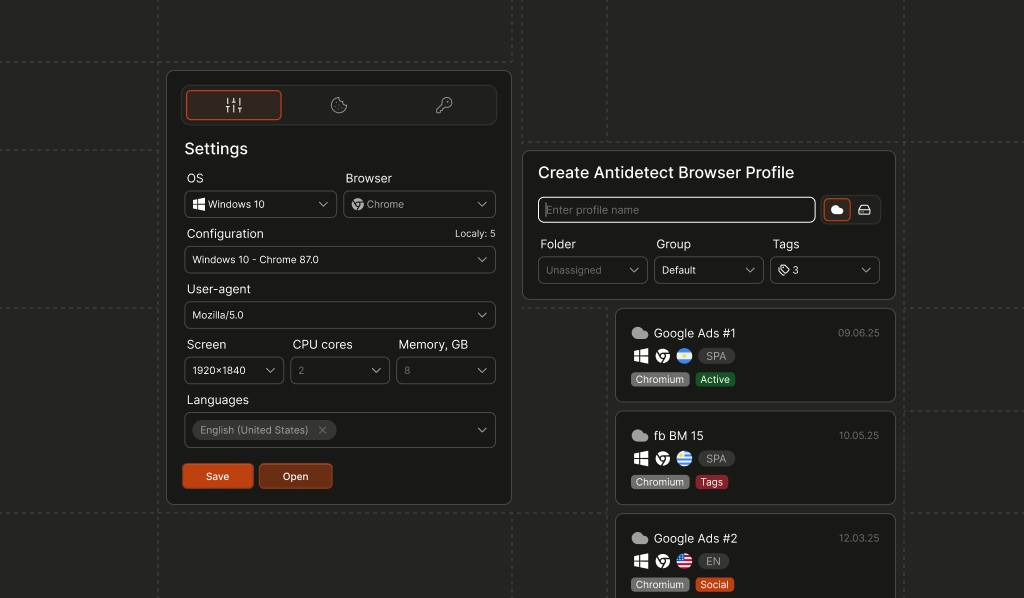
Summarize this article with
Anti-detect browsers are a daily nuisance for fraud prevention teams. If you’re searching for ways to spot them, you’re probably dealing with suspicious signups, multi-accounting fraud, or other types of fraud from users who have slipped past your usual defenses. While these browsers can be great for user privacy, they also let fraudsters manipulate device fingerprints and appear as an endless parade of “new” users, making them a favorite for everything from credential stuffing to bonus abuse. The good news: you can catch them, but it takes more than basic browser fingerprinting.
Let’s break down why anti-detect browsers are such a challenge, how they work, and what actually works to detect them, including the advanced techniques and tools that make a real difference.
Why anti-detect browsers are a growing problem
Anti-detect browsers have shifted from obscure tools to mainstream fraudster favorites, and they’re a real threat to any business that relies on device intelligence to prevent fraud, enforce account limits, or spot bots. These browsers are built for one thing: to let users appear as someone (or something) else, over and over, without getting caught.
Why should you care? Because the rise of anti-detect browsers fuels large-scale attacks that are almost impossible to stop with traditional methods. Think fake account farms, bonus abuse, or credential stuffing attacks that slip past your rate limits and device checks. If you’re seeing a spike in “unique” users from the same network or suspiciously similar behavior patterns, you might be facing an army of well-camouflaged imposters.
Detecting anti-detect browsers is now a must-have capability for fraud teams. So, how do these tools work, and how do you catch them in the act?
How anti-detect browsers work
Anti-detect browsers, such as Tor and Brave, and are purpose-built to defeat device fingerprinting, browser spoofing detection, and anti-fraud controls. They systematically manipulate nearly every browser and device attribute that websites use to recognize returning users.
Here’s what’s really happening under the hood:
- Browser spoofing: Anti-detect browsers let users select or randomize browser attributes, such as user agent, screen size, timezone, installed plugins, and more. Each profile looks unique, even if it’s running on the same machine.
- Anti-fingerprinting: These browsers go beyond simple spoofing. They actively disrupt fingerprinting scripts by injecting fake data, blocking certain APIs, or randomizing responses to make users harder to identify. This includes manipulating WebGL, Canvas, audio, and other subtle signals that are tough to fake consistently.
- Browser automation: Many anti-detect browsers support or are built on top of browser automation frameworks like Selenium or Puppeteer. This lets fraudsters automate repetitive tasks — think mass account creation or credential stuffing — while hiding the fact that it’s a script, not a human.
The result? From your server’s perspective, each session looks like a different, legitimate user, even though it’s all coming from the same fraudster. Standard fingerprinting and IP-based controls don’t stand a chance.
Why traditional detection falls short
Most legacy fraud prevention systems rely on a handful of signals — user agent, IP address, cookies, and maybe a basic device fingerprint. Anti-detect browsers are designed to defeat these checks. They can:
- Randomize user agents and browser versions on demand
- Rotate through proxy servers or use virtual private networks (VPNs) to mask IP addresses
- Isolate browser profiles to prevent cookie-based identification
- Manipulate or randomize common fingerprinting signals like Canvas or WebGL
If your detection logic only looks at these surface-level signals, you’re playing whack-a-mole with fraudsters who have better tools.
Fingerprint detects anti-detect browsers
If you want to move past homegrown scripts and patchwork solutions, Fingerprint provides a robust approach to detecting anti-detect browsers. Fingerprint uses 100+ device, browser, and network signals to build a unique visitor ID for each session.
In addition to this we provide 20+ Smart Signals to give you insights into your users’ intent. Specifically, our Browser Tampering Detection Smart Signal looks for inconsistencies that are telltale signs of anti-detect browser usage and compares their browser signature to our statistical models. When an anti-detect browser is detected, the Smart Signal’s antiDetectBrowser field will indicate this, giving you a direct way to flag suspicious sessions. This detection happens in the background, with zero impact on user experience.
Anti-detect browsers often come hand-in-hand with bots and proxy usage. Fingerprint’s Bot Detection Smart Signal identifies automated browsers and scripts, even if they spoof user agents. VPN Detection spots attempts to mask IP addresses or locations, so you know when someone is trying to hide their true origin.
Layered detection: the only way to stay ahead
Anti-detect browsers are only getting more sophisticated, but so are the tools for detecting them. The key is to look beyond surface-level signals and combine behavioral, network, and device intelligence for a holistic view of each session.
Here’s what works:
- Analyze what the browser claims versus what the network and device actually do
- Use advanced fingerprinting and Smart Signals to spot inconsistencies that fraudsters can’t easily fake
- Layer your defenses: Combine bot detection, VPN detection, browser tampering analysis, and behavioral monitoring for the best results
Taking this approach means you’re not just looking for a single “smoking gun,” but building a risk profile based on a wide set of signals. For example, if you spot a mismatch between reported device specs and network behavior, plus evidence of automation, you can flag the session for further review or require step-up authentication.
Stay ahead of fraudsters using anti-detect browsers
Detecting anti-detect browsers takes more than a few simple checks. Success depends on analyzing signal inconsistencies, monitoring behavior, and using adaptive detection systems that evolve with new threats.
The most effective strategy combines advanced fingerprinting, Smart Signals, and real-time behavioral analysis. By using Fingerprint’s device intelligence — including Browser Tampering Detection, Bot Detection, and VPN Detection — fraud teams can spot even the most sophisticated fraud attempts, while keeping the experience smooth for legitimate users.
If you’re ready to see these techniques in action, you can try Fingerprint’s advanced device intelligence with a free trial or connect with our team for a deeper dive into stopping fraud at the source. Either way, you’ll be better prepared to keep your platform a few steps ahead of the next wave of spoofers.
Ready to solve your biggest fraud challenges?
Install our JS agent on your website to uniquely identify the browsers that visit it.
FAQ
Yes. Some researchers and QA testers use them to simulate different environments. However, the overwhelming use case in practice is fraud and abuse.



